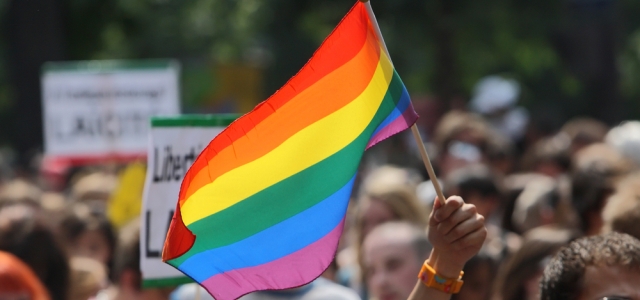 Roughly 11 million unauthorized immigrants live in the United States, and their backgrounds and stories are incredibly diverse. DREAM activists helped to change the picture of the 11 million by shining light on young people affected by our broken immigration system, while grassroots movements are highlighting the stories of families. But a new report from the Williams Institute adds another facet to this picture: an estimated 267,000 undocumented adults identify as LGBT. Even more compelling, the report highlights the other struggles LGBT individuals face when dealing with the legal immigration system.
Roughly 11 million unauthorized immigrants live in the United States, and their backgrounds and stories are incredibly diverse. DREAM activists helped to change the picture of the 11 million by shining light on young people affected by our broken immigration system, while grassroots movements are highlighting the stories of families. But a new report from the Williams Institute adds another facet to this picture: an estimated 267,000 undocumented adults identify as LGBT. Even more compelling, the report highlights the other struggles LGBT individuals face when dealing with the legal immigration system.
For unauthorized LGBT individuals, a path to citizenship is not only critical, but also demonstrates the range of people who could benefit from immigration reform. Gary Gates, author of the Williams Institute report, noted at an event last week that his estimate of LGBT unauthorized individuals is very conservative. He said he reached the number by cross-referencing survey data on undocumented immigrants, sexual orientation, and data on married same sex couples. Compared to all undocumented immigrants, they are more likely to be male and younger and less likely to be Hispanic. And as the Center for American Progress explains, they are also among the most vulnerable individuals in the U.S. because they belong to two marginalized groups: LGBT individuals and undocumented immigrants.
Including an earned path to citizenship in any immigration reform proposal would go far in helping LGBT undocumented immigrants with issues such as employment insecurity and health care access. But citizenship does not fix every problem that LGBT immigrants face. For example, because of the Defense of Marriage Act (DOMA), citizens cannot sponsor same-sex spouses or partners through family-based immigration preferences no matter that person’s immigration status. In addition to the number of LGBT undocumented immigrants, the Williams Institute reports that there are roughly 637,000 LGBT-identified adults who are legal immigrants, thousands of whom are in stable relationships and even raising children with their spouses and partners in the U.S. But they risk being separated if one person cannot gain permanent legal residency. The New York Times reports that some binational same-sex couples decide to leave the U.S. as a result of this. Additionally, employment visa holders are unable to bring their same-sex partners through a spouse visa.
In President Obama’s vision for immigration reform laid out in January, the proposal says same-sex families should be treated the same as all other families “by giving U.S. citizens and lawful permanent residents the ability to seek a visa on the basis of a permanent relationship with a same-sex partner.” And there is support for such a policy. Nearly two-thirds of Latino voters polled recently said they agreed that same-sex couples deserve equal immigration rights.
While many states are recognizing same sex marriages or other legally sanctioned relationships, immigration law remains behind the times, largely because DOMA defines marriage as a relationship between a man and a woman. Because immigration law is bound by that definition, it keeps LGBT couples apart. Even if DOMA is overturned by the Supreme Court, however, bringing immigration law in line with the times could prove challenging, which offers all the more reason to consider affirmative changes in the course of immigration reform.
FILED UNDER: defense of marriage act immigration, doma immigration, Executive Branch, immigration legislation, LGBTQ, Supreme Court, undocumented immigration, Visas


